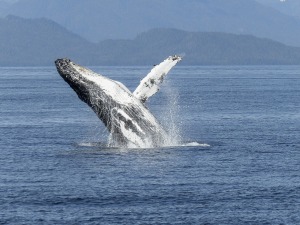From There to Here
By: Laurel Croza & Matt James
This is a Silver Birch Express book that we read this year that led us on a journey through Canada! Our journey started with this book, when a little girl moved from Saskatchewan to Toronto. As we learned about differences between the rural geographic features and other key characteristics of Saskatchewan, and the urban features of Toronto.
Our journey moved towards learning about the Regions of Canada, as part of our Social Studies unit.
As we studied, and worked in groups together to focus on the different regions, we integrated Art and co-created a map of Canada in the x-ray style of Norval Morrisseau:

Next, we used technology to create slideshows that demonstrated our knowledge and understanding of the regions of Canada, we looked specifically at pictures to convey our understanding visually. We then studied endangered animals and made connections with industries and regions of Canada. We asked questions to the Grade 9 class at North Collegiate. Students added audio or text, and created a thinglink.
https://www.thinglink.com/scene/651799658980442114
This thinglink has been shared on our classroom blog: http://educationcommons.net on Remind app for parents, and now on our Forest of Technology site!
These are the expectations we covered:
The following is a list of overall expectations we covered in our unit on the Regions of Canada:
Visual Arts – with Norval Morrisseau:
D3. Exploring Forms and Cultural Contexts: demonstrate an understanding of a variety of art forms, styles, and techniques from the past and present, and their sociocultural and historical contexts.
- B1. Application: assess some key ways in which industrial development and the natural environment affect each other in two or more political and/or physical regions of Canada (FOCUS ON: Cause and Consequence; Interrelationships)
- B2. Inquiry: use the social studies inquiry process to investigate some issues and challenges associated with balancing human needs/wants and activities with environmental stewardship in one or more of the political and/or physical regions of Canada (FOCUS ON: Perspective)
- B3. Understanding Context: identify Canada’s political and physical regions, and describe their main characteristics and some significant activities that take place in them (FOCUS ON: Significance; Patterns and Trends)
Oral Communication:
1. listen in order to understand and respond appropriately in a variety of situations for a variety of purposes;
2. use speaking skills and strategies appropriately to communicate with different audiences for a variety of purposes;
3. reflect on and identify their strengths as listeners and speakers, areas for improvement, and the strategies they found most helpful in oral communication situations.
2. use speaking skills and strategies appropriately to communicate with different audiences for a variety of purposes;
3. reflect on and identify their strengths as listeners and speakers, areas for improvement, and the strategies they found most helpful in oral communication situations.
Media Literacy
1. demonstrate an understanding of a variety of media texts;
2. identify some media forms and explain how the conventions and techniques associated with them are used to create meaning;
3. create a variety of media texts for different purposes and audiences, using appropriate forms, conventions, and techniques;
2. identify some media forms and explain how the conventions and techniques associated with them are used to create meaning;
3. create a variety of media texts for different purposes and audiences, using appropriate forms, conventions, and techniques;
We also connected with the Grade 9 class at North Collegiate using Green Screen and Twitter: Here is our Storify!!!!
Writing:
3. use editing, proofreading, and publishing skills and strategies, and knowledge of language conventions, to correct errors, refine expression, and present their work effectively;
3. use editing, proofreading, and publishing skills and strategies, and knowledge of language conventions, to correct errors, refine expression, and present their work effectively;
Reading:
1. read and demonstrate an understanding of a variety of literary, graphic, and informational texts, using a range of strategies to construct meaning;
Science & Technology – As we study our endangered animal and look at the interrelationships between the environment, physical features, animals, culture and industry of each Region of Canada.
Science & Technology – As we study our endangered animal and look at the interrelationships between the environment, physical features, animals, culture and industry of each Region of Canada.
- analyse the effects of human activities on habitats and communities;
- investigate the interdependence of plants and animals within specific habitats and communities; 3. demonstrate an understanding of habitats and communities and the relationships among the plants and animals that live in them.



No comments:
Post a Comment
We would love to hear from you!